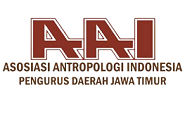Agenda setting and coverage of climate change adaptation issues in Kenyan Print Media
Downloads
This paper analysed leading print media in Kenya, the Daily Nation and the Standard, coverage of the COP 26 and COP 27 major global environment meetings. Using the agenda-setting and social responsibility theory of the press, content analysis examined the frequency and prominence of climate change adaptation in Kenyan print media, stories published a month before, during and after COP 26 and COP 27. The paper analysed stories published in October, November, and December of 2021 and those published in October, November, and December 2022 from the two leading dailies in Kenya. Results show print media in Kenya focuses more on adaptation stories and then mitigation, frame climate change stories using disaster, victims as key actors in disaster stories; government officials feature prominently in events-driven stories. The paper concluded that the agenda-setting role of Kenyan print media impacts public awareness and understanding of climate change adaptation issues. The paper recommends improving on frequency and framing of climate change adaptation stories on community voices, media houses having consistent and prominent placement of climate-related stories, specialised training for local journalists in environmental reporting, and involving experts and policymakers. Diversifying content and public engagement can drive action on climate adaptation.
Atieno, L., & Njoroge, J. (2014). Climate change impact representation in Kenya’s news media. European Journal of Business and Social Sciences, 3(8), 7–20.
Chattopadhyay, S. (2019). Development Journalism. In The International Encyclopedia of Journalism Studies (pp. 1–8). Wiley. https://doi.org/10.1002/9781118841570.iejs0122
Christians, C. G., Glasser, T. L., McQuail, D., Nordenstreng, K., & White, R. A. (2009). Normative Theories of the Media: Journalism in Democratic Societies. University of Illinois Press. Retrieved from https://www.jstor.org/stable/10.5406/j.ctt1xcjws
FAO. (n.d.). FAO in Kenya: Kenya at a glance. Retrieved from Food and Agriculture Organization of the United Nations website: https://www.fao.org/kenya/fao-in-kenya/kenya-at-a-glance/en/
Government of Kenya. (2015). Second National Communication to the United Nations Framework Convention on Climate Change. Kenya: National Environment Management Authority. Retrieved from https://unfccc.int/resource/docs/natc/kennc2es.pdf
Government of Kenya. (2016a). Kenya National Adaptation Plan 2015–2030. Republic of Kenya: Ministry of Environment and Natural Resources. Retrieved from https://www4.unfccc.int/sites/NAPC/Documents%20NAP/Kenya_NAP_Final.pdf
Government of Kenya. (2016b). Sessional Paper No. 5 of 2016 on the National Climate Change Framework Policy. Republic of Kenya: Ministry of Environment and Natural Resources. Retrieved from https://repository.kippra.or.ke/server/api/core/bitstreams/1b901c75-3ed7-4f19-aecf-1aa7a8b5a28e/content
Hase, V., Mahl, D., Schäfer, M. S., & Keller, T. R. (2021). Climate change in news media across the globe: An automated analysis of issue attention and themes in climate change coverage in 10 countries (2006–2018). Global Environmental Change, 70, 102353. https://doi.org/10.1016/j.gloenvcha.2021.102353
IPCC. (2023). AR6 synthesis report: Climate change 2023. Retrieved from IPCC website: https://www.ipcc.ch/report/ar6/syr/
Martius, C., Guérin, L., Pingault, N., Mwambo, F., Wassmann, R., Cramer, L., & Shikuku, K. (2023). Food systems emissions in Kenya and their reduction potential: A country profile. Center for International Forestry Research (CIFOR). https://doi.org/10.17528/cifor-icraf/008997
Media Council of Kenya. (2023). State of Kenya’s media in 2022. Retrieved from https://mediacouncil.or.ke/sites/default/files/downloads/State%20of%20Kenya%27s%20Media%202022%20Report.pdf
Mungai, E. W. (2021). Coverage of climate change issues in Kenyan print media: A case of Daily Nation and Standard newspapers. Aga Khan University.
Mwita, C. M. (2021). The Kenya media assessment 2021. Internews. Retrieved from https://internews.org/wp-content/uploads/legacy/2021-03/KMAReport_Final_20210325.pdf
O’Neill, S. (2020). More than meets the eye: a longitudinal analysis of climate change imagery in the print media. Climatic Change, 163, 9–26. https://doi.org/10.1007/s10584-019-02504-8
Republic of Kenya. Climate Change Act (Cap. 387A). , (2023). Republic of Kenya: National Council for Law Reporting.
Shao, L., & Yu, G. (2023). Media coverage of climate change, eco-anxiety and pro-environmental behavior: Experimental evidence and the resilience paradox. Journal of Environmental Psychology, 91. https://doi.org/10.1016/j.jenvp.2023.102130
Swain, K. A. (2021). Media Framing of Climate Change Mitigation and Adaptation. In M. Lackner, B. Sajjadi, & W.-Y. Chen (Eds.), Handbook of Climate Change Mitigation and Adaptation (pp. 1–69). New York, NY: Springer New York. https://doi.org/10.1007/978-1-4614-6431-0_6-3
UNEP. (2022). Emissions gap report 2022. Retrieved from UN: Environment Programme website: https://www.unep.org/resources/emissions-gap-report-2022
United Nations Office of the High Representative for the Least Developed Countries Landlocked Developing Countries and Small Island Developing States (UN-OHRLLS). (2009). The impact of climate change on the development prospects of the least developed countries and small island developing states. UN-OHRLLS. Retrieved from https://www.un.org/ohrlls/sites/www.un.org.ohrlls/files/the_impact_of_cc_on_ldcs_and_sids_for_web.pdf
Vikström, S., Mervaala, E., Kangas, H.-L., & Lyytimäki, J. (2023). Framing climate futures: The media representations of climate and energy policies in Finnish broadcasting company news. Journal of Integrative Environmental Sciences, 20(1). https://doi.org/10.1080/1943815X.2023.2178464
Wonneberger, A., Meijers, M. H. C., & Schuck, A. R. T. (2020). Shifting public engagement: How media coverage of climate change conferences affects climate change audience segments. Public Understanding of Science, 29(2), 176–193. https://doi.org/10.1177/0963662519886474
Copyright (c) 2025 Indonesian Journal of Social Sciences

This work is licensed under a Creative Commons Attribution-NonCommercial-ShareAlike 4.0 International License.
1. The authors agree to transfer the transfer copyright of the article to the Indonesian Journal of Social Sciences effective if and when the paper is accepted for publication. The authors can download the Copyright Transfer Agreement here.
2. The legal formal aspect of journal publication accessibility refers to Creative Commons Attribution-NonCommercial-ShareAlike 4.0 International License (CC BY-NC-SA).
3. Every publication (printed/electronic) is open access for educational purposes, research, and library. Other than the aims mentioned above, the editorial board is not responsible for copyright violation.

IJSS by Unair is licensed under a Creative Commons Attribution-NonCommercial-ShareAlike 4.0 International License.




















